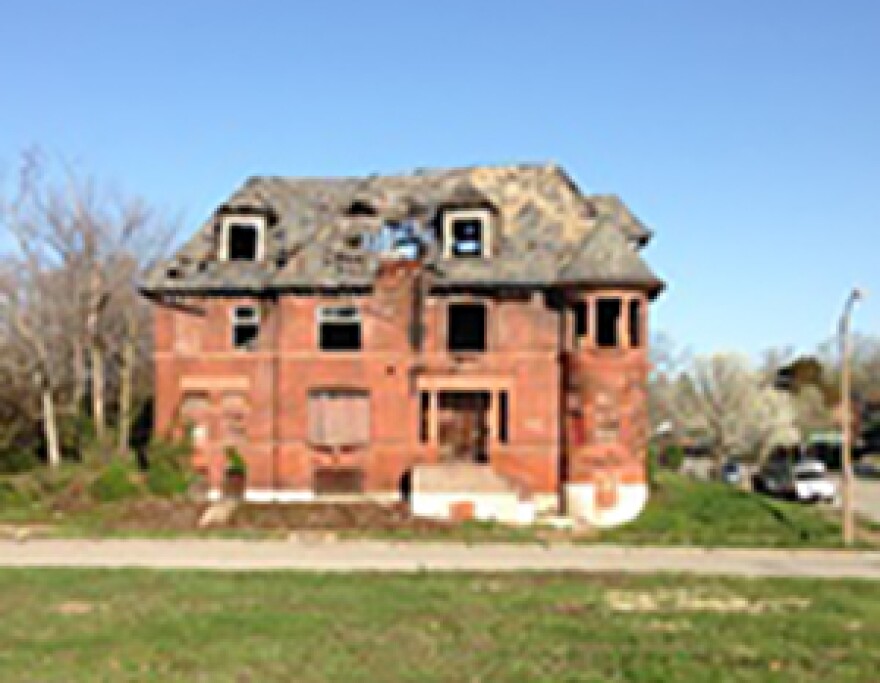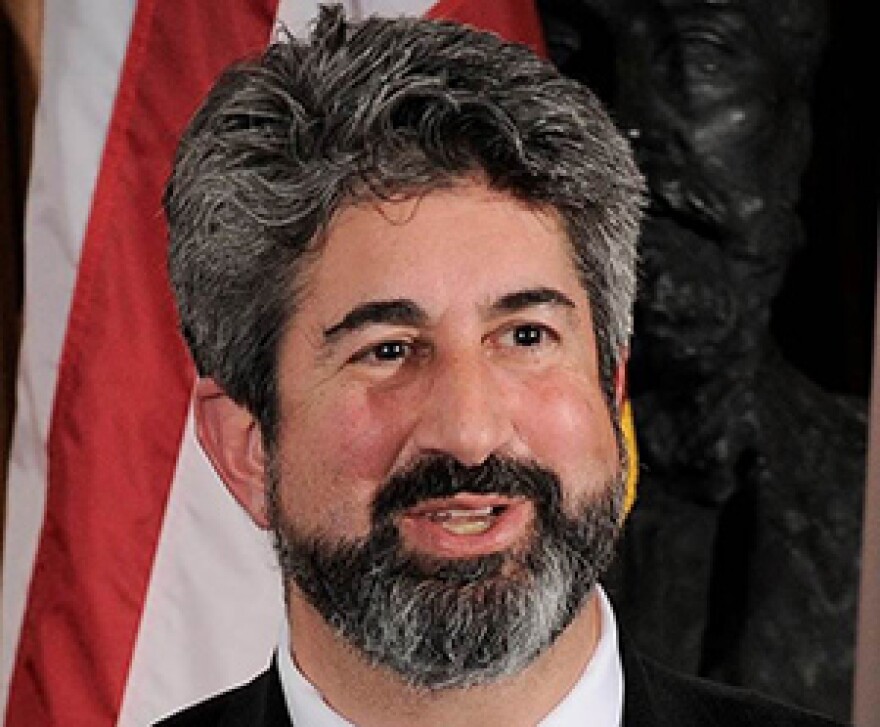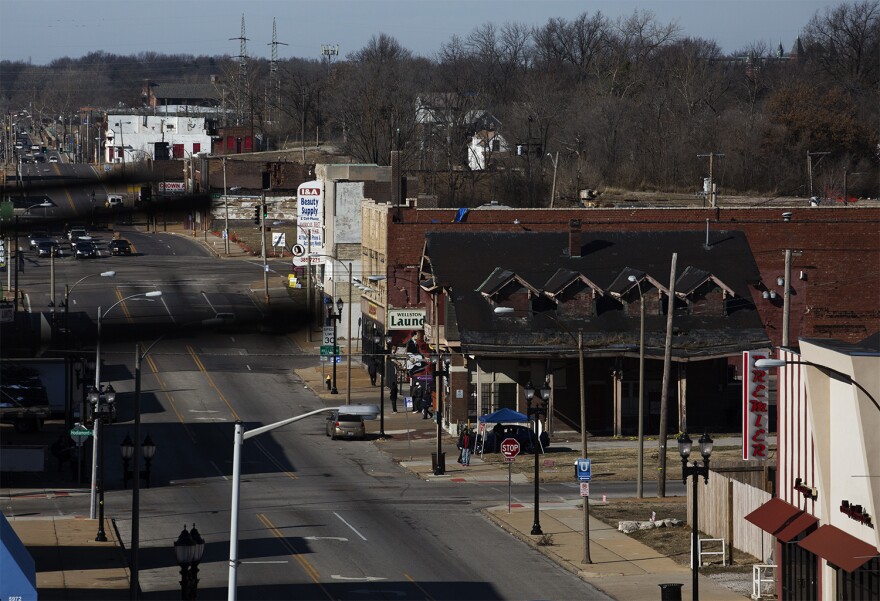Preservationists are a hardy and dedicated bunch. Stalwarts of the movement have faced hard battles, and usually kept their chins up when berated with contemptuous remarks about little old ladies in tennis shoes, and pigeon roosts and obstructing progress.
Now comes an architecture professor with a different criticism — that at this moment in history preservationism is becoming irrelevant in the face of societal and political distress. He belives it’s time to refocus the American preservationist philosophy and to concentrate energy not on vintage buildings or historic districts so much but on the distressed human inhabitants of distressed human habitations. He calls for critical and creative thinking about alliances of preservationists and advocates for social justice.
Max Page is professor of architecture at the University of Massachusetts Amherst, and director of its historic preservation initiatives. He will present his ideas in a talk at 7 p.m. tonight in Webster University’s Winifred Moore Auditorium.
He is an articulate advocate for directing preservationists’ visions forward, the better to serve a different, and considerably less well-heeled constituency while not losing interest in important, if superannuated, buildings.
Page will talk to his audience about his conviction that social justice considerations be included in official thinking about historic preservation – about preservation not only of our silent past but of our vocal and distressing present. He said he will talk about the dislocation or eviction of residents of buildings in historic neighborhoods or in blighted districts being cleared for commercial or governmental developments; he wants to discuss efforts at genuine sustainability that go beyond LEED certifications; he wants to challenge architecture school programs to include material and research in social justice preservation efforts.
Page’s considerations, therefore, are centered on human needs and protections, rather than policies or legal efforts aimed specifically and exclusively at the protection of vintage or historic properties. Page said his lecture comes out of 20 years of thinking about historic preservation because of the 50th anniversary of the historic preservation act.
“This was a key moment of achievement” he said, “but its time to chart the next 50 years.”

He is not unaware of the battles fought and victories won at great prices and took special note of an important anniversary in the history of American preservation.
Preservation's backstory
In 1966, the 89th Congress established the National Historic Preservation Act. We as Americans hadn’t been very careful before 1966, and demolition rampages and alterations of historic buildings were commonplace.
Government policies exacerbated the destruction of important buildings and neighborhoods. Ten years before the NHPA was signed, the Interstate Highway System was established by law, and vast portions of American cities bit the dust to accommodate automobiles and supposedly to make escapes from terrorism or civic unrest easier.
In 1955, the Third Street Expressway in St. Louis was dedicated at a cost of about $13 million. It was intended to reduce traffic congestion on Third Street, a street that had existed for most of St. Louis’s history, and was to aid automobile drivers headed for or out of the Central Business District (CBD). It widened Third Street from two lanes to six. Originally it connected the Riverfront, the Arch and downtown, and as it evolved came to connect I-70, I-64/40, I-55 and I-44. It is regarded by many as a major contributor to urban sprawl and inner-city decline.
Before that there was the vast clearance of 40 square blocks of 18th and 19th century buildings for the Jefferson National Expansion Memorial. The Arch stands there now, and there is always the question of whether it might have been better to clear less land and install the monument in a contextual environment rather than a scalped one.
Yet all is not lost. Visitors to the city regularly comment on the great buildings we have. Many of the worthy buildings have been saved thanks to the efforts of preservationists and of the Landmarks Association, despite large clearances and contractions.
The preservationist movement got its start in the 19th century when George and Martha Washington’s house, Mount Vernon, came close to biting the dust, and had it not been for a group of dedicated and determined women, the Mount Vernon Ladies Association, which who raised $200,000 to buy the property from John Washington, it more than likely would have been knocked down to provide land for some commercial development of one sort or another.
And so for a half a century this “Act to establish a program for the preservation of additional historical properties through-out the nation and for other purposes” has exalted many American cityscapes and rural landscapes. The act established the Advisory Council on Historic Preservation, the State Historic Preservation Offices, and the National Register of Historic Places. It requires that federal agencies evaluate the impact of all federally funded or permitted projects on historic properties, which includes archeological sites as well as buildings.
Preservation rooted in civil rights
To help understand Page's philosophy, he mentioned a particularly important remark made by the late Martin Luther King Jr: “The arc of the moral universe is long but aims toward justice.” The preservation movement, Page said, “should be toward building a more just society.” He continued: “It is great that we save buildings, but my argument is that progressive ideas should be the future."

He has just turned in the manuscript of his latest book, one that discusses the preservationist movement as it exists now and presents three subject areas where the attention should be directed They are:
- Encouraging movement toward a more robust and egalitarian development philosophy in cities. The movement has a bad rap for being elitist and primarily aesthetic, presenting an attitude of “We don’t care about your poverty.” Preservation can’t be just about architecture, Page said. Whole neighborhoods should be transformed and the future must be taken into account. There should be protections against wholesale gentrification included in plans. Action against evictions or about relocations, he said, should be part of the preservationists’ push.
- Preservation must include a commitment to sustainability. When the act was passed in 1966, Page said, the idea and even the term “sustainability” was nonexistent. Now, in many different ways, cases are being made to protect the environment, to better understand and to work to control climate change. Page said environmental thrift should be part of the idea. Preservationists, he said, need to be prepared to advocate for design that embraces adaptive reuse considerations.
- Places with painful histories, from which a common inclination would be to run away, need to be spotlighted, Page said. “The preservation movement has a unique opportunity to confront the most painful parts of our past. We need to confront parts of our history we’d rather not see: the place where a race riot happened, for example," or where men and women were arrested for protesting racial segregation. "What I am proposing is that the preservation world should be a place where people are paying attention not just the heroic and the beautiful but also the ugly and the difficult.
Local support for the new ideas
Michael Allen, St. Louis architectural historian and director of the Preservation Research Office, knows Page and has contributed an essay to his new book. “I tend to agree that social justice needs to become part of the preservationist ethic when we are dealing with older American cities, especially in the areas of housing equity, zoning and large scale development. The rights of people living in these environments need to be considered and protected,” he said.
“I think we still have an unresolved preservation crisis on the north side of the city at the NGA site (the National Geospatial-Intelligence Agency) . It is disappointing that there is no one to advocate officially the preservationist cause for the African American households on the site. We need to be paying attention not only to the built culture but also to the living culture. We need to come to its defense,” he said.
Washington University Architecture College instructor Andrew Raimist is active in preservationist efforts in the Wells Goodfellow neighborhood and the City of Wellston. He said Page is moving in “absolutely the right direction.”
He said that even though he is entirely sympathetic to saving buildings of merit, creating empty monuments as tourists sites, or protecting buildings that have no function other than simply being there, is often not reason enough for saving a building. He believes that now a new breed of preservationists is going around, one that is thinking progressively about neighborhoods and districts that protect residents and promote sustainability.
“The social fabric can be enhanced by restoring buildings, but you can marry history with legitimate human needs," Raimist said. "It’s great when both happen. But I say ‘no’ when it comes to focusing on one and not the other.”
Page’s lecture is sponsored by the Webster Groves Historic Preservation Commission, with support from Webster University’s Department of Art, Design, and Art History and the Missouri State Historic Preservation Office. It is free and open to the public.





